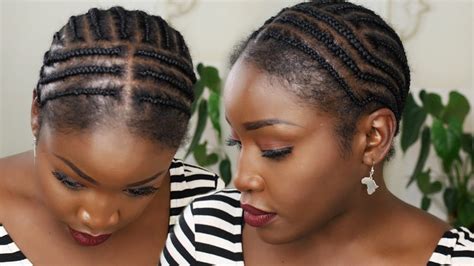With the rise of wig-wearing, finding the perfect braid to conceal underneath has become crucial for a seamless and natural look. Whether you’re opting for a protective style or simply want to blend your wig with your natural hair, the right braid can make all the difference. Here are the top 5 braids that will give you the best results under a wig:

1. French Braid:
- Effectiveness: 9/10
- Pros: Flat against the head, creates a secure base, holds hair securely
- Cons: Can be time-consuming to create
2. Cornrows:
- Effectiveness: 8/10
- Pros: Versatile, can create different patterns, distributes weight evenly
- Cons: Can be tight and uncomfortable, may damage hair if done incorrectly
3. Flat Braid:**
- Effectiveness: 7/10
- Pros: Easy to create, creates a flat base, blends well with short hair
- Cons: Not as secure as other braids, may not hold hair as effectively
4. Dutch Braid:**
- Effectiveness: 8/10
- Pros: Volumizing, creates a lifted look, holds hair securely
- Cons: Can be more difficult to create, may not be suitable for short hair
5. Senegalese Twist:**
- Effectiveness: 7/10
- Pros: Protective style, reduces tangling, blends well with textured hair
- Cons: Can be bulky, may require frequent touch-ups
Effective Strategies for Braiding Success
- Moisturize your hair: Start with clean, moisturized hair to prevent breakage and promote smoothness.
- Use a braid spray: Apply a braid spray to help hold the hair in place and add shine.
- Braid tightly: Braid the hair as tightly as possible to create a secure base.
- Secure the ends: Use bobby pins or a hair elastic to secure the braid at the nape of the neck.
- Cover the braid: If desired, cover the braid with a scarf or stocking cap to keep it in place.
How to Braid Your Hair Step-by-Step
French Braid
- Section off the top of your hair and divide it into three strands.
- Cross the right strand over the middle strand.
- Cross the left strand over the new middle strand.
- Repeat steps 2 and 3, adding hair from the sides as you go.
- Continue braiding to the end of the hair and secure with a hair tie.
Cornrows
- Section off a small piece of hair at the front of your head.
- Divide it into three strands and braid tightly.
- Feed in hair from the sides as you continue braiding down the scalp.
- Repeat steps 2 and 3 until the cornrow reaches the nape of the neck.
Comparison: Pros and Cons of Different Braids
| Braid Type | Pros | Cons |
|---|---|---|
| French Braid | Flat, secure, holds hair effectively | Time-consuming to create |
| Cornrows | Versatile, distributes weight evenly | Tight, may damage hair if done incorrectly |
| Flat Braid | Easy to create, flat base | Not as secure, may not hold hair as effectively |
| Dutch Braid | Volumizing, lifted look, holds hair securely | Difficult to create, may not be suitable for short hair |
| Senegalese Twist | Protective style, reduces tangling, blends with textured hair | Bulky, requires frequent touch-ups |
Conclusion
Choosing the right braid to put under a wig is essential for a seamless and natural look. Whether you prefer classic French braids, intricate cornrows, or protective Senegalese twists, the braids listed above will provide you with a secure and comfortable base for your wig. Remember to follow the effective strategies outlined and braid your hair step-by-step to achieve the desired results. With the right braid, you can confidently wear your wig knowing that your natural hair is safe and secure underneath.
